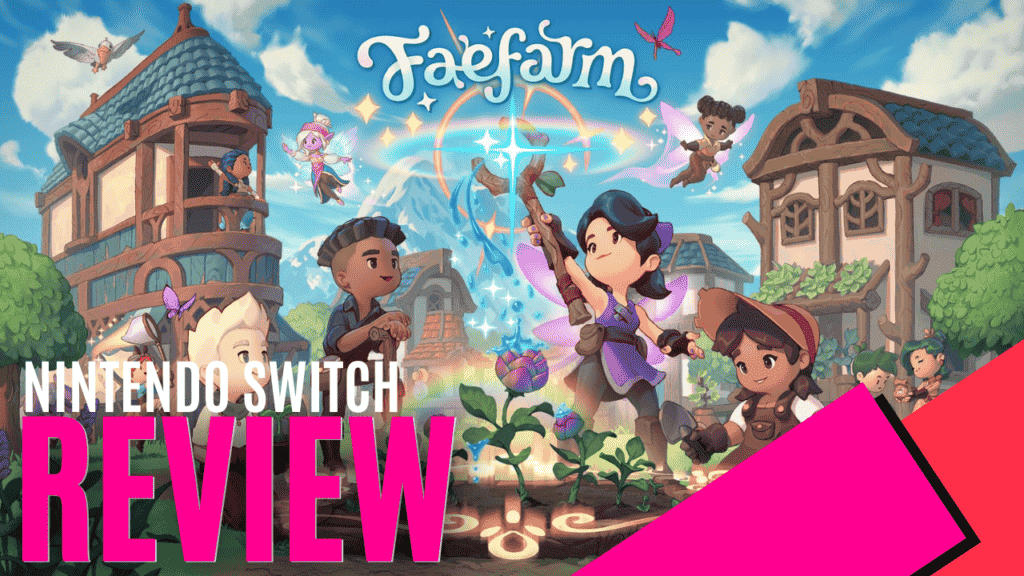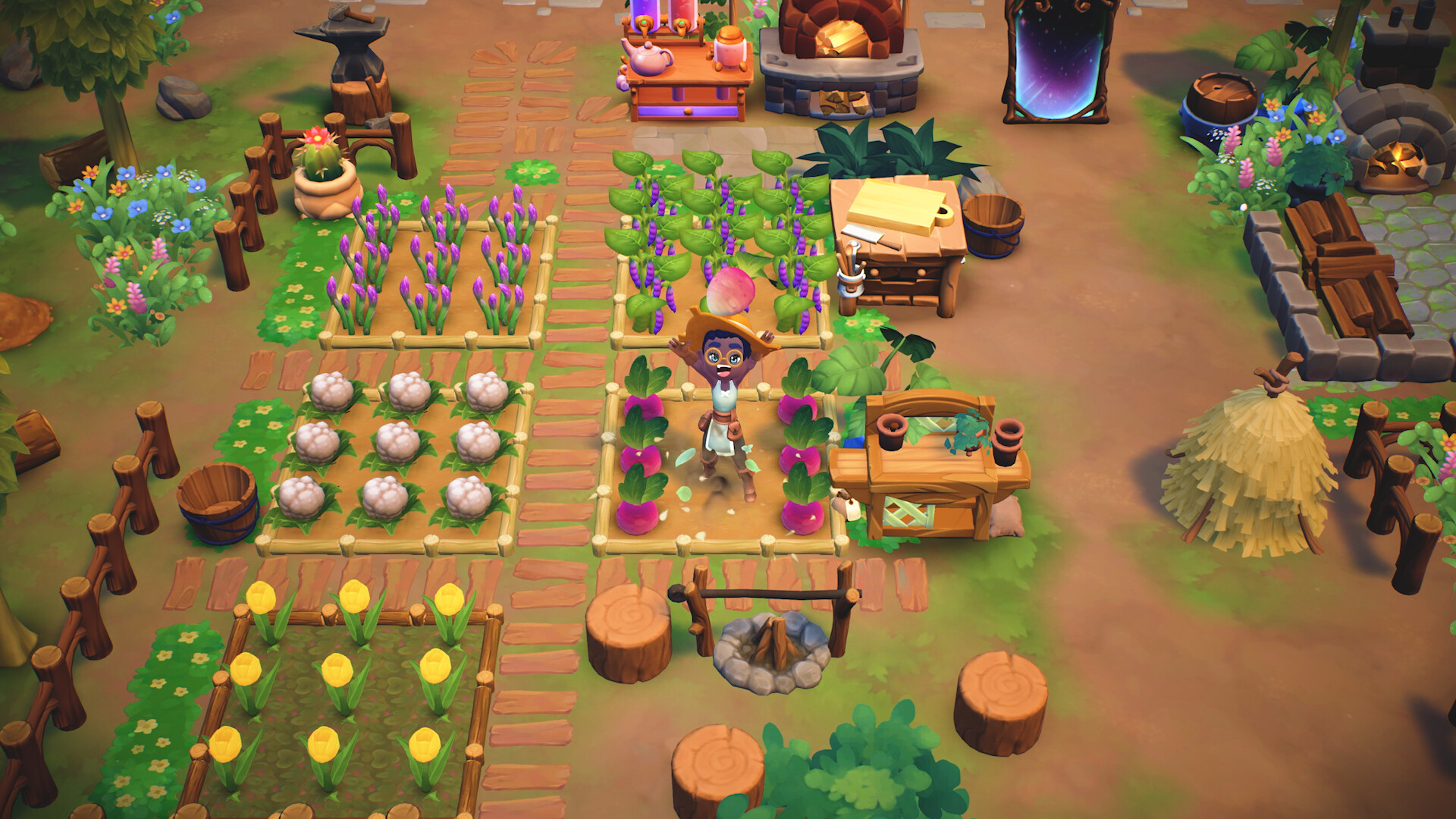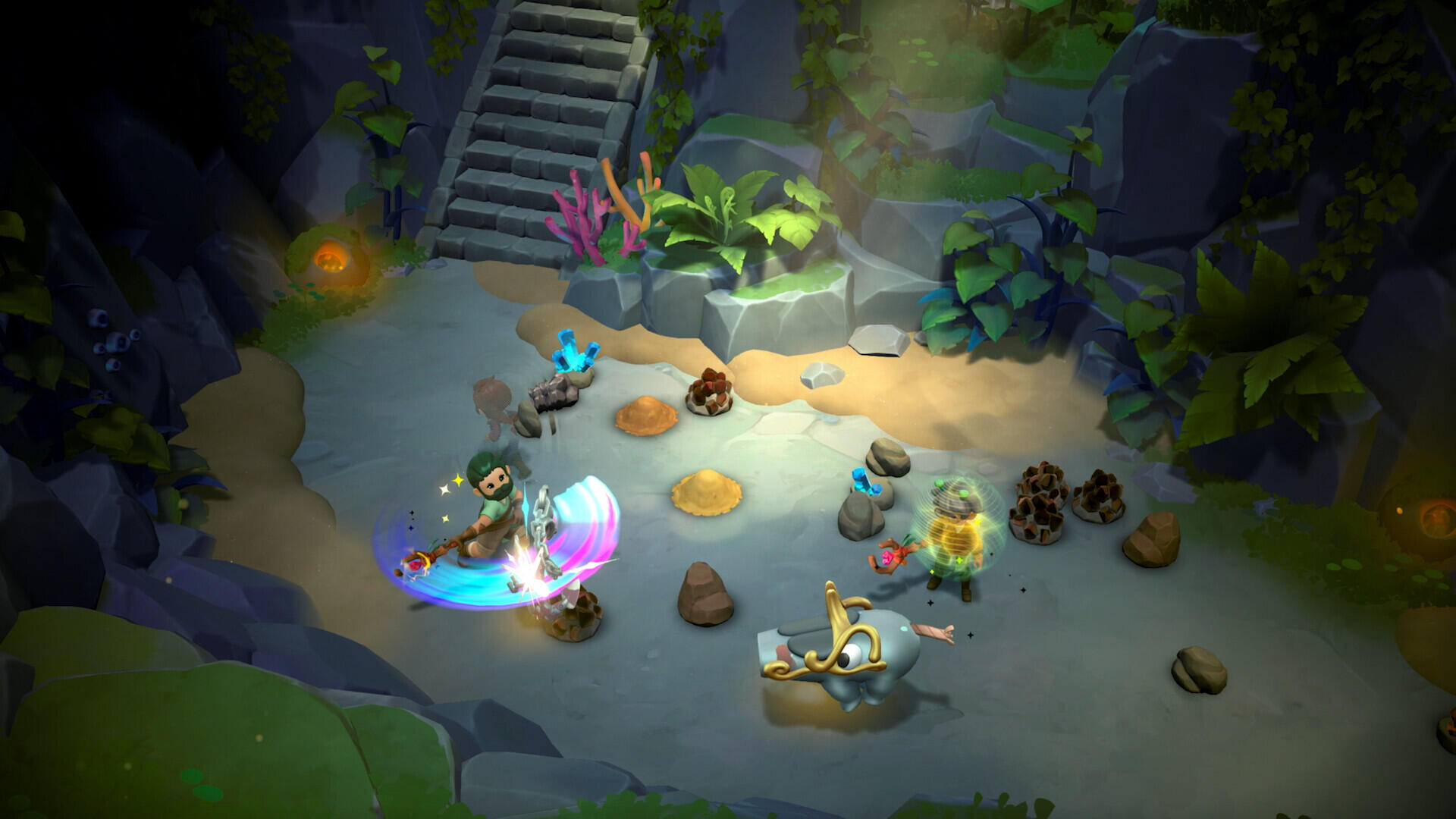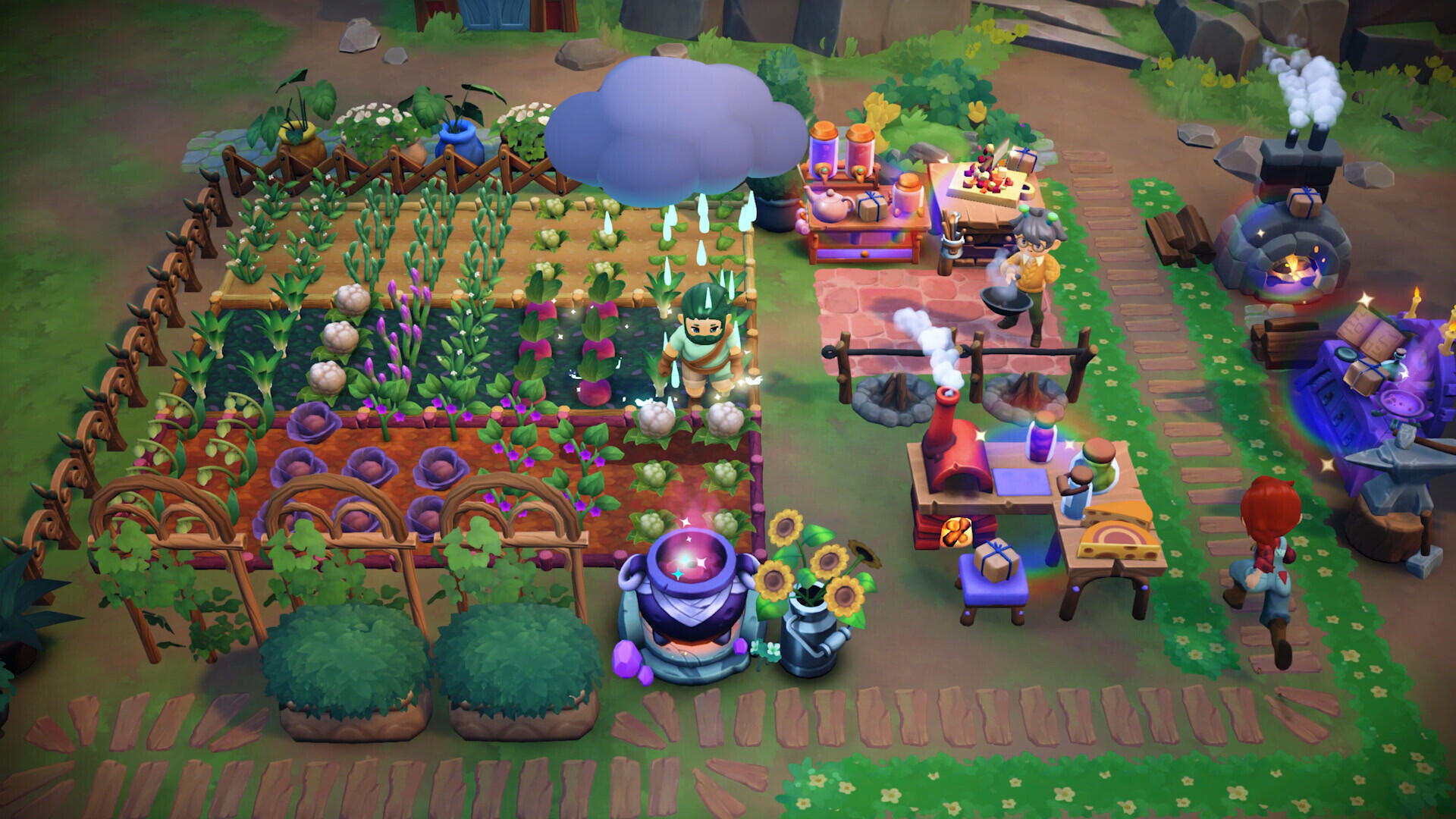
I have never worked on a farm, but in the virtual world, I am an absolute master of crop cultivation, animal rearing, and amassing an impressive collection of assorted bugs and fish. I am by no means a stranger to this life, and I’m very happy for a night snuggled up with my Nintendo Switch at the ready to play another cosy farming and life-sim game. The folks at Phoenix Labs add a sprinkle of magic to the virtual farm life with Fae Farm, where the everyday and fantastical combine.
Some of my most fond childhood gaming memories sprung from the 90s iconic cosy game, Harvest Moon. The need to move to a small town in the middle of nowhere, inherit a farmhouse, and become a champion for the people seems to be something to aspire to for myself and fellow mellow gamers, so imagine my absolute joy as my custom-created pink-haired, giggly out-of-towner finds a message in a bottle, and after a seafaring journey gone awry, washes up on the shores of Azoria.
It seems I am here to save the citizens of this isle from a bizarre series of mystical phenomena including, but not limited to: excessive whirlpools, gaseous miasma, vine-infested pathways, haunted statues, and hostile musical instruments. It’s a lot to take in, but Fae Farm does a relatively good job at alleviating some of the pressures of work-life balance between running a farm, schmoozing with the locals, running cross-country between realms, and always being able to make it home by bedtime.
It turns out the Mayor of this seaside town was expecting me and swiftly moves me into a farmhouse. After a pretty cruisy start to island life, I got put to work. The opening tutorial quests are short and simple, just like me, with tasks such as cultivating crops, chopping through plants and trees, crafting, cooking, and catching all manner of critters. The main questline can be tackled at whatever pace you like, with seemingly no locked-in time pressures that many farm sim games tend to have.

I dabbled in having a social life and failed spectacularly within days once I realised how much I didn’t care for the uninspired NPCs. Smaller questlines include “jobs” or mini NPC-issued quests for an item, and apparently, everyone wants blueberries. My love life was particularly dull, with only 6 eligible suitors whom I merely had to chat with a few times to woo before going on a series of mediocre dates. I found myself spending more and more time away from the townsfolk in favour of my solitary life, where my only friends were the farm animals. However, if you are a socialite, you can invite up to 3 friends to join you in your travels.
My farm was neglected once the main quests involved delving into dungeons. I’ve never enjoyed the mining aspect of farm-sims for the sheer amount of time and effort it takes, and believe me, the second dungeon took a lot of it. While the dungeon levels are short, they are very copy-paste layouts, and with a massive 25 levels per dungeon, it’s tedious, to say the least. A session of spelunking involves mining for minerals where rarity differs the further you go, warranting multiple trips to grab a few gems for crafting.
Wayshrines, while useful as a portal to other locations, require activation in the form of seals, which need to be made with these gems. Collecting resources and placing seals is a task that can take way too many in-game days, each of which clocks in at 18 minutes in real-time. The farming I had to do in dungeons was not the kind of farming I wanted to invest all my time in, and as my little miner’s energy depleted, I found my interest began to as well.
Enemies take the form of various cursed objects like aggressive instruments, nautical navigation tools, and sculptures. It can be surprisingly hard to dodge their attacks and they get incredibly annoying when trying to mine as efficiently as possible. Potion prep is the best move to ensure survival with health potions, elemental buffs, and a bottle of bees for some reason. I did enjoy coming back from the farm and brewing up a fresh pot for the following morning.

The approach to farming focuses more on collecting minerals and resources from critters, instead of the usual fieldwork, which was far more crucial as they aided in making potions and tools to progress dungeons. I had very little need for money and barely tended to crops. Any food I needed to make for the trip I could easily gather without needing to worry about gardening. A nice touch was the boost to health, stamina, and mana that a little interior design can give. Furnishing your home with the right home-made furniture items increases stats, meaning more time hacking and slashing, and less time chugging potions to make it a little further into those darn dungeons.
What I really appreciate is how streamlined controls and movement are in Fae Farm. Controls are standard fare, except for the wonderful implementation of a tool that can actively change based on what’s needed: look at a rock, wield a pickaxe. There’s a pile of dirt next to it? No problem, have a shovel. It beats cycling through tools, and to my relief, took some of the strain out of dungeoneering.
Moving around the map is super simple, with a speedy character, mushroom jump pads, Wayshrines that can (eventually) be unlocked, and not too far in, a set of wings. For some reason, they are for double-jumping rather than flying, but they are very useful regardless. The game is generally very forgiving. Losing all health merely spawned me back at the beginning of the dungeon level and there are no penalties whatsoever.
Most importantly, there’s no need to rush home at the end of the day. You can be well into the depths of a dungeon up until midnight, and you’ll get told at 11 pm it’s time to go to bed, but it isn’t until the clock strikes 12 that you’re whisked home to end the day. Being able to be massively productive from early morning to midnight and still wake up well-rested is definitely a big plus too, if only I were willing in real life.

Fae Farm is a treat to explore, with everything spanning from the beachside town and bright green fields, to azure blue waterfalls and beaches being colourful, bright, and adorable. The Fae Realms, however, completely overshadow the human realm. The vibrancy and quirkiness of the mystical realms take Fae Farm to a place I wish it stayed a lot longer – where the magic is. The blend of typical farming-sim environments and characters with the magical realms is a satisfying one, though a little more time on the surface appreciating it rather than in the caves below would have been preferable.
Likewise, music and sound effects are soothing and fit perfectly, exactly when and where they need to. There were times I almost fell asleep to the soft, subtle music and the ambience of the wind rustling through trees as birds chirped in the distance. The music was so calming and I’m not at all angry about it, but it was also dynamic when it needed to be during combat or key moments.
While the visual and musical performances themselves are stunning, the actual gameplay performance was not quite as consistent. Early on I stayed at a stable 30FPS apart from a few small frame drops. It wasn’t until I reached the Fae Realm that the stuttering became a regular occurrence. As much as I adore the glowing mushrooms, god rays, and falling leaves, it seemed the Fae Realm’s beauty was also its downfall. Once I went through that portal the performance went somewhere else entirely. The frame drops usually weren’t too much of a hindrance, until it could be the difference between making a jump or taking damage in a dungeon. To my surprise, the game ran worse docked rather than handheld, and on both, load times could be a lot longer than one would expect. No matter what screen you’re looking on, I can’t stress this enough, they looked incredible.
Fae Farm adds a dash of magic to the tried and true farm/life-sim experience, which most of the time, works in its favour. Charming and relatively calming is part of the reason I found this game a great successor to farm-sims gone by.

The Good
- Relaxed, low-stakes gameplay
- Beautiful lands and music
- Adds a fun, magical touch to typical farm-sim gameplay
The Bad
- Dungeon progression is a grind
- Occasional frame drops and the occasional slow load times
- Uninteresting NPCs and relationship building








